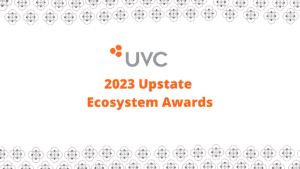By: Maureen Newman, UVC Biomedical Engineering Community Connector
Hiding within every university is a treasure trove of technologies that may hold vast market potential as solutions to vital needs or problems. These technologies are products of billions of dollars of federal and state research money, and while some ultimately have no market potential, others lay dormant until someone like Tony Eisenhut comes along and finds them. Eisenhut is the current president of Rheonix, Inc. and co-founder of KensaGroup, a technology commercialization company. With a repertoire of 14 university-derived start-ups under his belt, he currently spends more than 90% of his time focused on Rheonix and its core technology.
Receiving training at Cornell University in animal sciences as an undergraduate and moving on to work in upper management in grocery retail for ten years with Aldi Foods, Eisenhut had a “very nonlinear path” to the point he is at today. “I was interested in science, I wanted to stay close to science, and I made some investments,” he recalled. Among the successful investments in Eisenhut’s portfolio, a common theme appeared: a strong ability for the management team to adapt a technology to the needs of the market, not necessarily a strong technology.
Rheonix happens to have a combination of the two. The company grew out of Kionix, Inc., a MEMS-based company launched by Gregory J. Galvin, PhD, who is the current CEO and Chairman of Rheonix. Fundamental research for Rheonix was initiated by Peng Zhou, PhD, current CSO and Senior Vice President of R&D at Rheonix, who had an interest in applying the manufacturing process and know-how of Kionix to microfluidic medical devices. From the period between 2002 and 2005, Galvin and Zhou adapted Kionix’s manufacturing processes in such a way that they could pursue intellectual property.
It was then (late 2005) that Eisenhut began consulting for Kionix. “Greg was looking to monetize basic research and build the early IP portfolio surrounding the technology,” said Eisenhut. “The market requires multiple pieces of IP.” From late 2005 to 2009, Eisenhut became more and more involved in the development of Rheonix and decided to take a sabbatical from KensaGroup; in 2010, he became president.
Eisenhut has a passion for non-traditional biotech drug discovery, medical devices and materials. “It is an area where I spend a lot of time, and I see myself staying in that industry.” He sees Rheonix as unique among the other 14 start-up companies in his portfolio because “Rheonix addresses a meaningful unmet need in the marketplace. The technology was great and there was a great team in place that grew significantly with time,” he stated. “The medical marketspace grows at an incredibly high growth rate, giving significant opportunities for Rheonix.”
Yet with all the myriad opportunities abound in the medical marketplace, Eisenhut says Rheonix remains grounded in research areas that relate to the core platform technology. “We are focused primarily on in vitro diagnostic (IVD) human diagnostic testing, but also other areas like food and animal testing and next generation sequencing, as well,” explained Eisenhut. “But Rheonix has a core platform technology, and any pursuit has to tie back to the platform.” When identifying new areas of research, the team at Rheonix looks at the size of the market, a gap in the market, and the adoption cycle for a new market entrant.
Using these principles, Rheonix has researched and developed their technology along to verge of FDA approval. They have internally validated their device, and they will be submitting their 510K approval for the device and its applications in the first half of 2015. Consequently, no pre-sales of the product are in place, but Eisenhut indicated, “First adopters will be hospital-based laboratories who are performing in-house diagnostic molecular testing.”
Looking down the road, Eisenhut anticipates the first sales revenues in the first half of 2015 for the molecular diagnostic platform and the consumable that goes along with it. Thus far, the company has attained partnership and research revenues. “Ultimately, Rheonix is a venture-backed company. It will either be acquired or go public so investors can have their exit.” After the exit, Rheonix will likely reach its inflection point of value, and Eisenhut may return to KensaGroup. Undoubtedly, start-up company number 15 will be just as successful as Rheonix.






